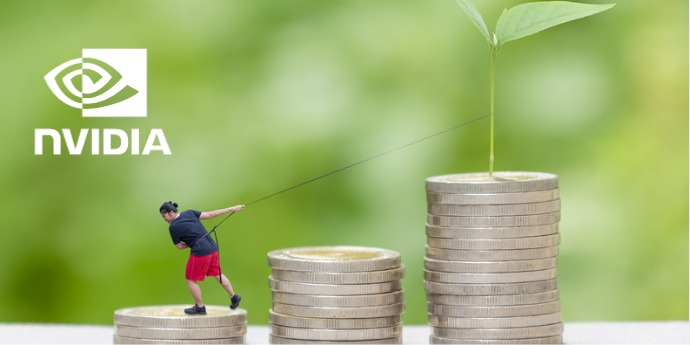Imagine a company that makes computer chips so powerful, they help computers learn new things—like how to answer questions, write stories, or recognize pictures. That company is Nvidia. Recently, Nvidia announced its biggest sales ever in one quarter, all thanks to the big excitement around AI.
In this blog, we’ll walk you through:
- Who is Nvidia
- What happened in their latest earnings
- Why AI is driving this growth
- What might come next?
- Why this matters to all of us
1. Who Is Nvidia?
Nvidia is a technology company based in California. It’s famous for making GPUs—special chips that help computers process information really fast. These GPUs were originally made to make video games look amazing.
But lately, Nvidia’s GPUs are at the heart of AI. They help computers learn new things like talking, writing, and recognizing images. Nvidia now plays a central role in AI because its chips are the engines that power learning machines. By early 2025, Nvidia was worth more than any company ever—over $4 trillion—a number far bigger than Microsoft or Apple!
2. What Happened in Nvidia’s Latest Earnings?
In their second quarter of 2025, Nvidia made history:
- Total sales (revenue): $46.7 billion —this is a whopping 56% jump from the same time last year.
- Net profit (money left after costs): $26.4 billion —a 59% increase year over year.
- Data center sales (where AI chips are used): $41.1 billion—also a 56% rise.
In short: AI demand is fueling Nvidia like never before.
3. Why Did AI Sales Soar?
AI technology is everywhere—in big data centers, self-driving cars, robots, and even super-smart apps like ChatGPT. Companies like OpenAI, Meta, Microsoft, and Google are using Nvidia’s chips to run powerful AI models.
Nvidia’s new Blackwell chips offer even more computing power, driving massive sales. AI is booming, and Nvidia is riding that wave.
However, not everything is perfect. Sales in China are tricky. Nvidia’s H20 chip, designed for China, saw limited sales because of U.S. export rules. Even so, Nvidia reached a deal to sell these chips, with a 15% revenue share promised to the U.S. government.
4. What Does the Future Look Like?
- Forecast for next quarter: Nvidia projects $54 billion in sales—very strong, but slightly below what some investors hoped for.
- Because of that, Nvidia’s stock fell about 3% after hours. Investors are a bit worried the rapid growth may be slowing.
- Still, AI infrastructure spending is expected to reach $3–4 trillion globally over the next few years, and Nvidia might capture 70% of that. Their future looks bright!
- The company also announced a massive $60 billion buyback—buying back its own stock to return value to shareholders.
5. Why Does This Matter?
- AI is transforming everything. From self-driving cars to smart assistants, AI plays an increasingly significant role each day. Nvidia’s sales show how vital its chips are.
- Tech and jobs. Big spending on AI means new technologies, new startups, and new jobs around the world.
- Global tension. The China trade issue shows how politics can affect technology. Companies and countries must navigate carefully.
- Money talk. Should companies invest in AI? Should others worry about a tech bubble? These numbers help guide decisions.
Conclusion
Nvidia’s latest quarter was a record-breaker—driven by unstoppable demand for AI chips. They brought in $46.7 billion in revenue and $26.4 billion in profit, thanks to AI-powered sales. Yet, with China trade issues and a cautious outlook, investors hit the brakes slightly.
Still, AI’s future shines bright. Nvidia appears poised to play a pivotal role in shaping that future—one smart chip at a time.
